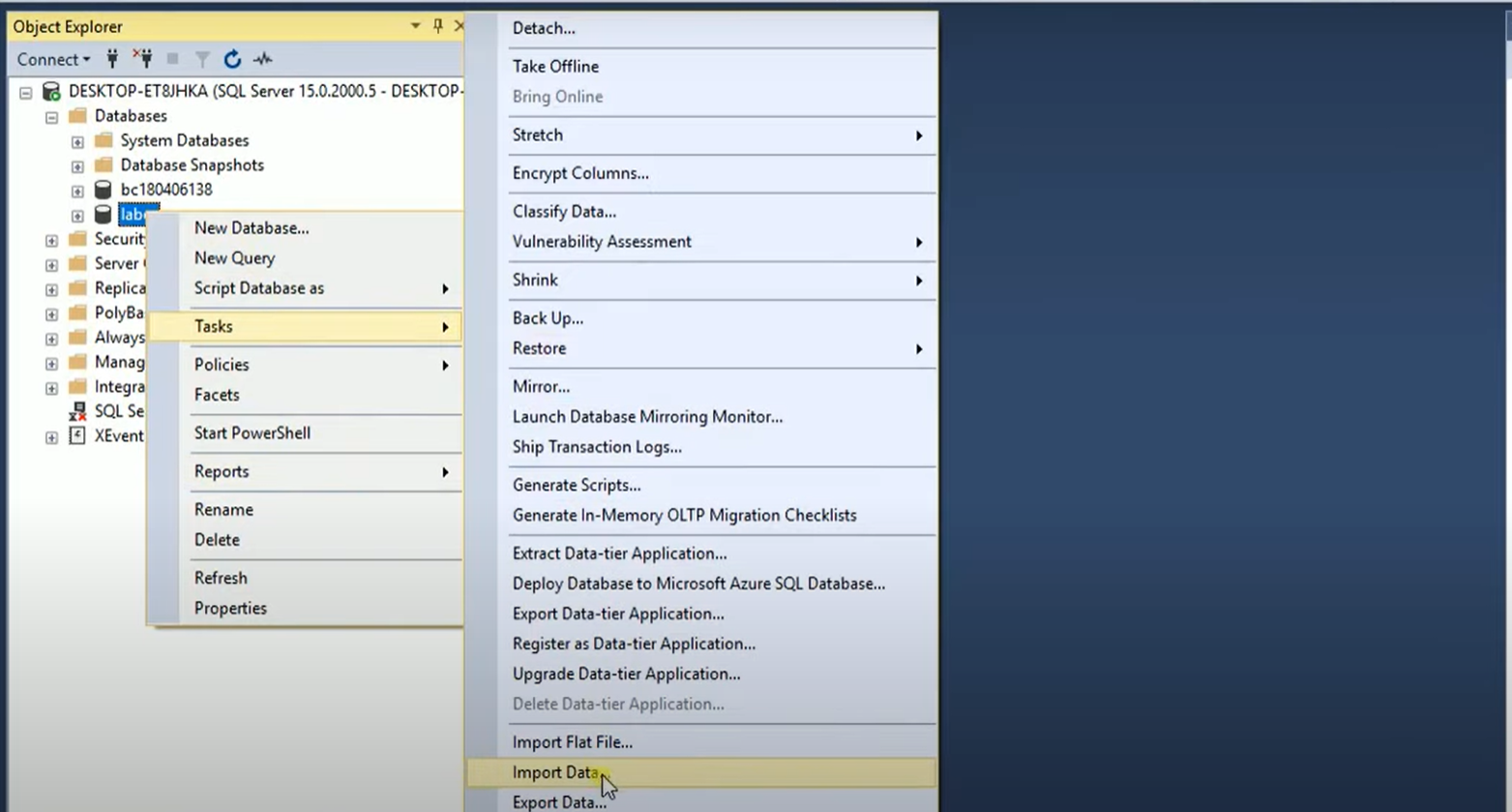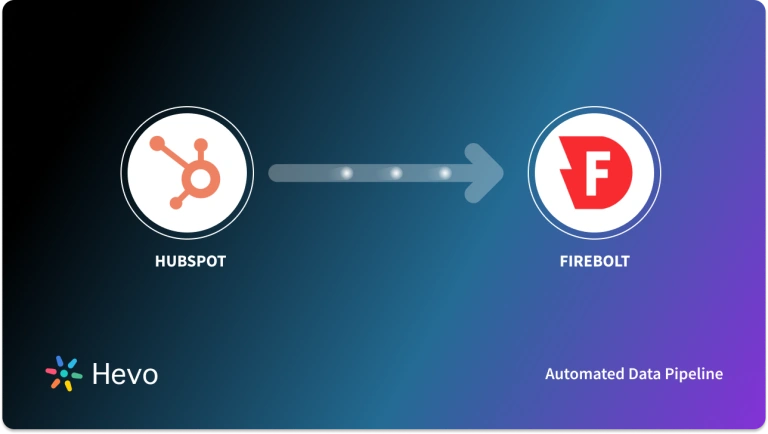If you’re looking to migrate your data from HubSpot to SQL Server in a secure and simple manner, you’ve come to the right place. There are many reasons why organizations might want to replicate data from their source systems to the destination of their choice. For instance, migrating data to a data warehouse can help you with faster querying and computation. Some organizations might also want to migrate data from their SaaS applications, like HubSpot, to a database, like SQL Server, to centralize their data and access them more easily.
On that note, here’s a blog post that will walk you through two easy methods to perform this integration and access your data in a safe and secure way.
Table of Contents
What is HubSpot? An Overview
HubSpot is an all-in-one inbound marketing and sales software platform that helps companies attract visitors, convert leads, and close customers. It is a cloud-based platform that provides tools for marketing, sales, service, web content, and operations teams to work together seamlessly. Key features of HubSpot include:
- A centralized CRM to manage customer data and interactions
- Tools for creating and managing websites, blogs, landing pages, and email campaigns
- Functionality for social media posting, ad campaigns, and marketing analytics
- Sales enablement features like lead engagement, deal management, and reporting
- Customer service tools for ticketing, self-service, and support analytics
Use Hevo’s no-code data pipeline platform to integrate your data effortlessly. You can extract data from 150+ data sources(including 60+ free sources), including Hubspot, directly into your Warehouse in a few clicks.
Why Hevo?
- Provides an automapping feature to automatically detect schema changes.
- Get 24/5 live chat support.
- Ensures Real-time data sync for better insights.
Explore Hevo’s features and discover why it is rated 4.3 on G2 for its seamless data integration. Try out the 14-day free trial today to experience hassle-free data integration between your source and desired destination.
Get Started with Hevo for FreeWhat is SQL Server? An overview
SQL Server is a database system that stores structured, semi-structured, and unstructured data. It supports languages like Python and helps you extract data in different formats from different sources, sync it, and maintain consistency. The database provides controlled access to the data, making SQL Server more secure and ensuring regulatory compliance. See how SQL server migration can be done easily. Key features include:
- SQL Server includes various data mining, disk partitioning, and data management tools that aid companies in maintaining and storing sensitive data.
- In most cases, the data may get corrupted with server shutdowns. But, the application software supports various features that help developers to create frequent backups, recover, and restore lost information. Users can easily restore the entire database with SQL Server.
- The software uses encryption algorithms to keep data secure at all times. With encrypted data, attackers find it hard to break the security layers. Thus, it reduces the risk of threats and cyberattacks.
Preparing HubSpot Data for SQL Server Integration
Like all relational databases, SQL Server requires a well-defined schema before data population. Data is organized into schemas, which are namespaces for database objects like tables with columns of declared data types.
SQL Server supports numerous data types, allowing flexibility and optimization when working with data from sources like web services that serialize data in JSON. Mapping data correctly to appropriate SQL Server data types is crucial, as changing types later can be costly.
For example, dates in JSON are strings, but storing them as date types in SQL Server unlocks powerful analytics capabilities. A common strategy when loading HubSpot data into SQL Server is creating a schema where each API endpoint maps to a table, with each response key as a column with the correct SQL Server data type conversion.
As HubSpot API data types may change, you’ll need to adapt your database tables accordingly, as there’s no automatic data type casting. Once you have a complete, well-defined SQL Server data model, you can proceed with loading data into the database.
Method 1: Using a Private App Access Token
Step 1: Head to your HubSpot account to create a private app
- Navigate to Settings > API > Private Apps
- Create the app by clicking on Create Private App and entering a name for the app

Step 2: Next, click on Settings and then hit the Generate Access Token button
Step 3: Include the access token at the header of your API requests to use it to make API requests to HubSpot
Step 4: Import your HubSpot data into SQL Server
- Head to Object Explorer in SQL Server Management Studio, and expand Databases
- Now, right-click on the database that you want to import the data to
- Navigate to Tasks > Import Data

- Choose Import from a File and click on Next in the Import Data Wizard
- Next, select the File option and click on Next in the Select Source Data dialog box
- In the Select Files or Folders dialog box, browse for the files that contain the HubSpot data and then open it
- In the next step, you’ll have to head to the Select Source Tables or Views section, to select the tables or view you wish to import. Click on Next after making your selections
- Select the database and table where you want to import your data in the Select Destination dialog box, and then hit Next
- Now, you’ll have to save the import results and hit Next in the Save Options dialog box
- Finally, review all the import settings that you’ve made in the Summary dialog box and click on Finish
Your HubSpot data will be imported into the SQL Server table.
This method gives you the flexibility to choose and import data into SQL Server in the way you want it. However, with an increase in your data volume, this manual method can become too tedious and time-consuming. Plus, with the HubSpot APIs being deprecated, you’ll now have to have to create a private app access token for HubSpot SQL Server integration.
Using a no-code, fully-managed automated data pipeline can offload the stress of migrating data manually and help you allocate your engineering team’s bandwidth in other important tasks.
In the following section, we’ll discuss the automated method and the advantages of using such a tool.
Method 2: Using a No-Code Automated Data Pipeline
Step 1: Configure HubSpot as Source
Step 2: Configure SQL Server as Destination
And that’s all. In just a few minutes, your data will start streaming from HubSpot to SQL Server.
What Can You Achieve by Migrating Data from HubSpot to SQL Server?
There are several benefits of copying data from HubSpot to SQL Server. Some of them are:
- Increased Flexibility: You can use SQL Server’s flexible infrastructure to create custom queries and reports.
- Improved Performance: SQL Server helps you access your data more easily, which is especially important if you have large volumes of data.
- Enhanced Security: SQL Server offers a variety of security features, such as encryption and access control, which can help to protect your data from unauthorized access.
- Better Scalability: Migrating HubSpot to SQL Server enables you to easily add more data or users as your needs grow. SQL Server can be scaled horizontally or vertically, depending on your needs.
You can also read more about:
- PostgreSQL on Amazon RDS to SQL Server
- SQL Server Replication Tools
- Magento to SQL Server
- Oracle to SQL Server
Conclusion
Using the two simple methods that we discussed in this blog post, you can seamlessly perform HubSpot to SQL Server ETL. The manual method can be tedious and time consuming, and also prone to errors, especially if you have large datasets. And that is why using a third-party data pipeline like Hevo, that is fully-managed and automated can be a better choice.
Learn how to connect HubSpot to Snowflake for enhanced data warehousing and analysis and Move Data from HubSpot to MySQL.
Hevo Data, with its 150+ plug-and-play integrations (including 60+ free sources) is helping thousands of customers take data-driven decisions through its no-code data pipeline solution for HubSpot SQL Server integration. Try a 14-day free trial and experience the feature-rich Hevo suite firsthand. Also, check out our unbeatable pricing to choose the best plan for your organization.
FAQs
1. Can HubSpot be used as a database?
HubSpot is not a standard database, but you can store and administrate information through its features of CRM. For such heavy database functionality, it would need to be integrated with external databases.
2. How to get data from CRM to SQL?
With APIs or third-party tools, you can pull, transform, and load from a CRM into an SQL database. For example, APIs or even an integration with platforms like Zapier are available through HubSpot to perform these data pulls.
3. Does HubSpot use SQL?
HubSpot does not use SQL directly for the user, but its own infrastructure handles all its data needs. However, you can integrate HubSpot data with SQL databases through its integrations or APIs.









